Review: Alien: Earth, "Neverland" & "Mr. October" | Season 1, Episodes 1-2
FX's franchise extension finally bursts from its long gestation
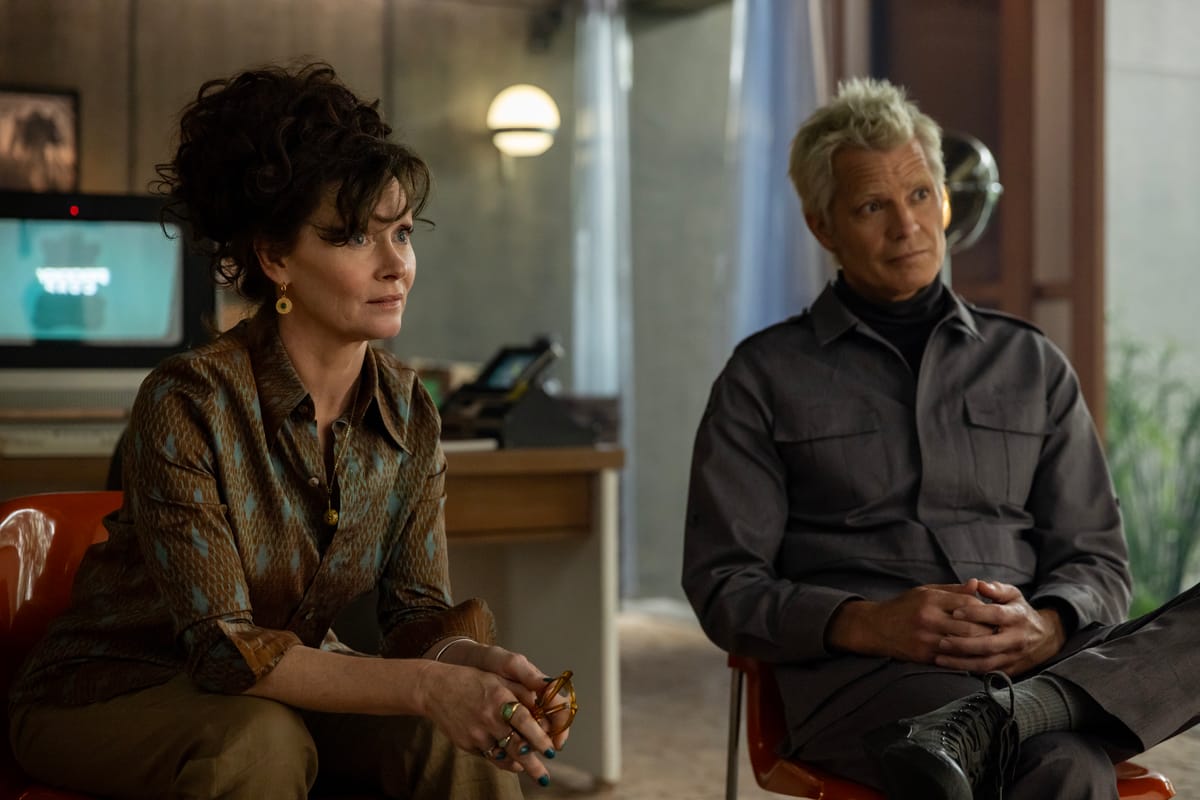
Welcome to Episodic Medium’s coverage of FX’s Alien: Earth. As always, this review—which will cover the first two episodes, so watch both before reading—is free for all, but subsequent reviews will be exclusively for paid subscribers. To learn more about the site and how to save 20% off a yearly subscription to our new Loyal Viewer tier, click here.
Although I have been culturally aware of the Alien franchise for a long time, and definitely saw most of the first two movies through a form of osmosis, I only recently sat down to really dig into its evolution in preparation for its arrival on television. Watching all of the films in order—we did Predator too, given the pending crossover in Badlands—told a story of a piece of intellectual property that has proven incredibly resilient in spite of some fundamental mismanagement.
Take, for instance, the original “Quadrilogy.” I’m not here to debate the relative merits of the four films in the original timeline, but the thing that struck me most was how terrified they were of moving past Ellen Ripley. The trick that James Cameron pulls in Aliens to leverage Sigourney Weaver’s star turn and transform her into an action hero is effective, but it becomes less effective each time the franchise returns to the same well. This is a world that raises an incredible amount of questions, with films stretching over two centuries, but the narrow focus on Ripley (and her clone) ignores that in favor of a star-driven approach that saw diminishing box office returns in North America. They’re sequels with no interest in building a franchise, at least not in terms of how we’d conceptualize it in 2025.
Now, I’m aware through my research that this is somewhat misleading: Dark Horse Comics began populating stories from the world of the Alien films beginning in the late 1980s after Aliens, while the 21st century saw Dark Horse expand to multiple in-world novels. In these low-stakes derivative spaces, creatives like Mark Verheiden (who would go on to write on Battlestar Galactica) explored the mythology the films largely used as background for Ripley’s journey, even imagining a showdown with Predator as a crossover with Dark Horse’s comics based on that Fox film series (which, notably, took a more anthological approach). It was this crossover that finally inspired Fox to start treating Alien as a franchise, releasing one pulpy if forgettable film and then an absolutely illegible turd of a sequel in the mid-2000s.
That Alien could survive these films is a testament to its inherent appeal, but by the time Ridley Scott decided it was time to return to the franchise he helped create, the industry was entering a new era. If the 2000s were about Fox “milking assets”—to use Cameron’s term dismissing the Predator crossover—without concern for the sanctity of either franchise, Scott’s approach with Prometheus was built on the advances of transmedia storytelling led by shows like Lost, which might explain why they turned to Damon Lindelof when rewriting the script. The marketing campaign for Prometheus delivered on worldbuilding the Alien franchise had previously eschewed, albeit with the caveat that it, uh, wasn’t technically an Alien movie. While we consider Prometheus to be part of the franchise, the choice to play coy with the connection created mixed messaging, with sequel Alien: Covenant serving as something of a mea culpa: “don’t worry,” it says, “this time there’s actually a Xenomorph.”
I write this preamble because I consider Alien: Earth to come at a pivotal time for this franchise. Last year’s Alien: Romulus was notable as a conscious reboot of the feature films, telling a contained story of a young female protagonist not unlike Ripley. It came at a time when Disney—and all major studios—was doubling down on I.P., and years into a long-gestating development cycle for Noah Hawley’s television take on the franchise. Formally announced almost five years ago, the FX series arrives amidst a broader push into I.P. among prestige streaming platforms—HBO’s upcoming lineup is full of prequels and spinoffs, everyone working overtime to create television companions to the box office hits that do more for the company’s bottom line. The success of Alien: Romulus at the box office demonstrated the franchise’s recognition among audiences; the fate of Alien: Earth will determine whether that recognition can translate into a vested interest in worldbuilding television as a medium demands.
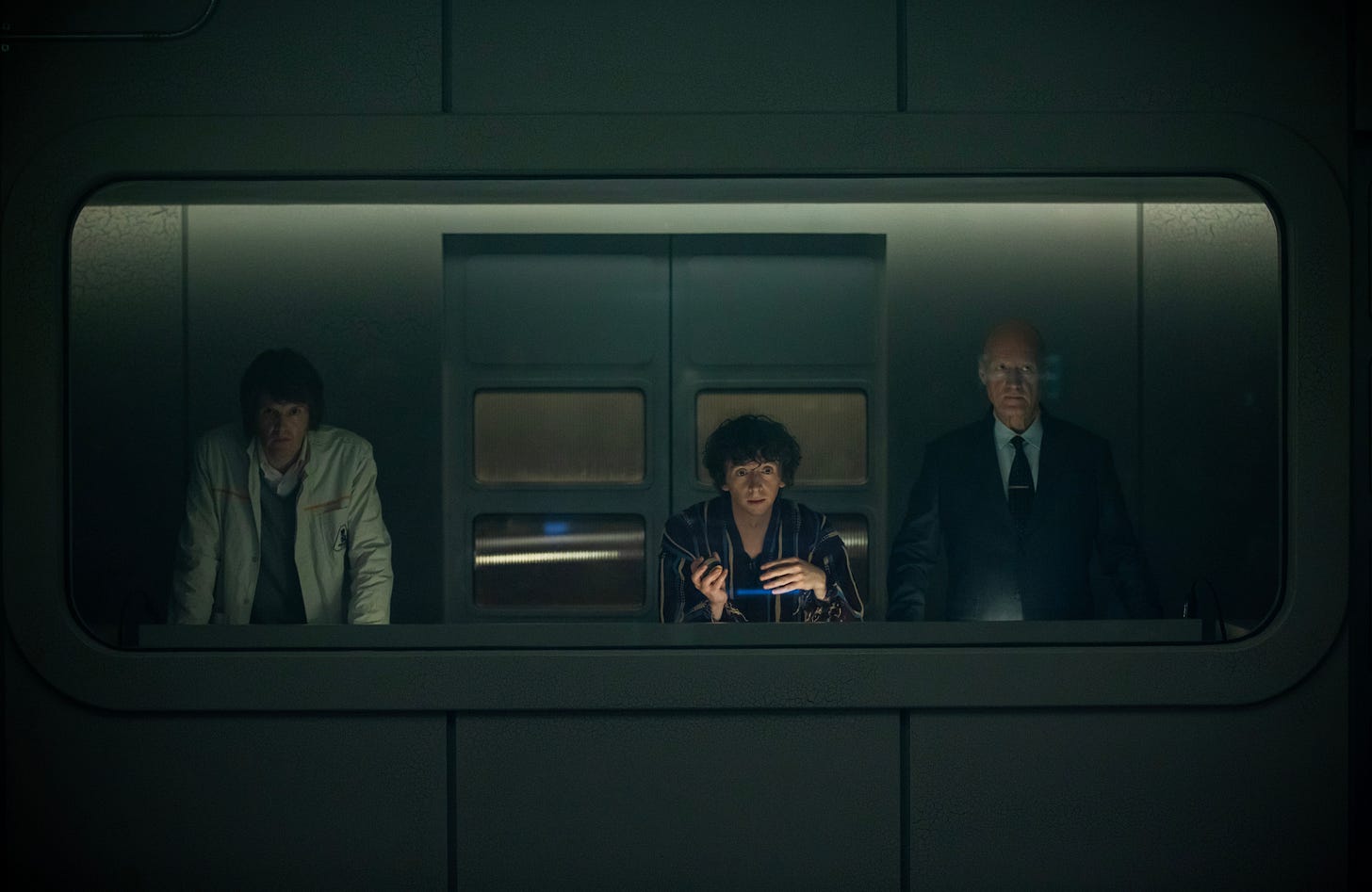
The first episode of Alien: Earth wastes no time committing to this vision, swiftly establishing context for the world of this particular story. While we do get glimpses of what we’ve come to expect from Alien—a shadowy mission into deep space aboard the Weyland-Yutani Maginot where everything goes wrong—the additions here are about the state of Earth itself. This is an Earth where corporations like Weyland-Yutani possess immense power, and where they race for control over the future of life itself. The core drive of Prometheus was Peter Weyland’s search for immortality, and Hawley’s take on the franchise reorients this as a battle between corporate leaders fighting over their own form of I.P.: enhanced individuals, in one form of another.
Although we get glimpses of Cyborgs and Synths both, Alien: Earth is the story of the hybrids of Prodigy. Instead of being cybernetically enhanced humans (Cyborgs) or artificially intelligent robots (Synths), Hybrids are human consciousness downloaded into artificial bodies, superhuman in strength but vulnerable emotionally. The technological necessity of using children heightens this contrast, provoking very clear questions about what it means to be human just as escalating alien threats to humanity crash land in New Siam.
What’s notable about this worldbuilding is that it’s not really tied to what we most associate with the Alien franchise. It’s taking place in the same world, yes, and Prodigy’s competitive position vis-a-vis Weyland-Yutani and the existence of synths means there’s a thread here. But ultimately, the wunderkind Boy Kavalier is not in the business of searching out alien creatures, and it’s only fate that brings the crash-landed Maginot to his doorstep. While we get a glimpse of Yutani in these first two episodes, the core of this series is the first field test of Prodigy’s hybrids, as leader Wendy unwittingly volunteers the “Lost Boys” for a search-and-rescue mission that just happens to involve some gnarly creatures from deep space.
It’s possible these two lines of story will converge more as the season progresses—as always, I don’t watch ahead of what I’m reviewing—but right now we can really assess them as two different entities. In the cast of the Maginot and its specimens, it allows Alien: Earth to deliver what you’d expect from an entry in the Alien series. The flashbacks to the chaos aboard the ship offer deliberate throwbacks to Alien itself, which were also central to Romulus, while the Xenomorph’s rampage through Prodigy City creates a vibe not dissimilar to when Spielberg’s T-Rex stormed through San Diego. There’s a clear mix here between scenes where nominally decent people—like the soldiers done in by the blood suckers—are subject to horrifying deaths and cases like the “Let Them Eat Cake” partygoers whose gruesome end at the hands of the Xenomorph represents a sort of karmic retribution. Either way, though, we have both a central threat and a range of mysterious new creatures that can be deployed as horror when needed, and the level of execution here is solid. If we judge this franchise by the nightmares it gives us, that cat is certainly going to be right up there.
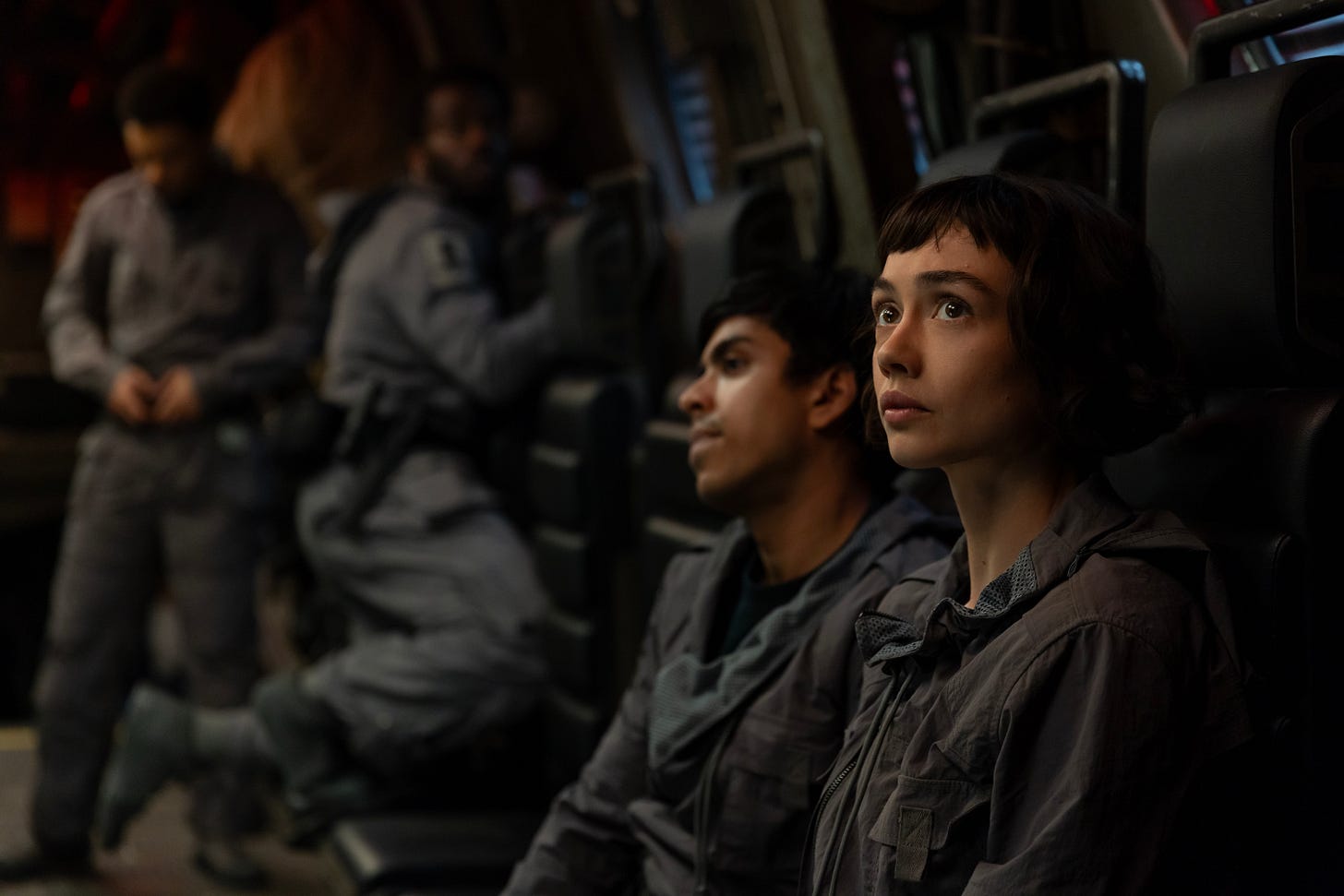
The Prodigy side of the story is more nascent, and has more question marks. Wendy is ostensibly our focus, and is really the only one of the Hybrids with a significant story arc—notably, all of the other Lost Boys sat out the show’s press conference. I can understand why Hawley was attracted to the idea of Wendy: a dying girl transposed into an adult body creates an unending well of curiosity mixed with a naïveté about the horrors of her own kind. Sydney Chandler is playing the “wisest” of the Lost Boys, with the most time to acclimate to her leadership position as the “first,” but she is still not immune to the vulnerability of her position. She may be able to follow orders, but she volunteers them for the Maginot crash solely because she knows that her brother Joe—Hermit to his co-workers, and in FX’s official materials—will be there, and is constantly misusing her powers to stalk and/or communicate with him.
Chandler’s performance is compelling, and I never once stopped “buying” the conceit. What’s less clear to me at this stage is how much story there is to this dynamic. The first two episodes come with lots of scenes of caring mother figure Dame Silvia and stern father figure Kirsh debating whether the hybrids are human, and it’s a thematic statement that doesn’t really go anywhere. I appreciate Timothy Olyphant waxing poetic about humans being food as much as the next person, but the expositional weight of the setup makes it all feel a little ready-made. The story gains more weight when it becomes about the siblings and Hermit discovers his sister’s fate, but whether the story can find enough oxygen in an action context remains to be seen. In the end, obviously Wendy both is and isn’t human, and the effectiveness of this will depend on how the vessel for this story—the hunt to contain/survive the contents of the Maginot—serves it.
At least here, there isn’t a significant amount of story beyond it. Boy Kavalier does get his brief scene with Yutani, where he confirms his interest in the ship’s cargo purely on the grounds of corporate ownership, but the ultimate goals of Prodigy seem mostly beside the point here. When FX held a press conference, they made a big deal out of the idea that there were five corporations that control the Earth, but the other three are left extremely vague here, even in the opening exposition aboard the Maginot (where Dynamic is at least mentioned by name based on their control of the Moon). Yutani does seem like the other major focus, given Morrow’s one-cyborg quest to capture the Xenomorph and the other experiments for his employer, but he’s being left purposefully mysterious, meaning I can’t say how substantive that’ll be (although his presence at the show’s press conference confirms the show views him as a core cast member, unlike the other Lost Boys).
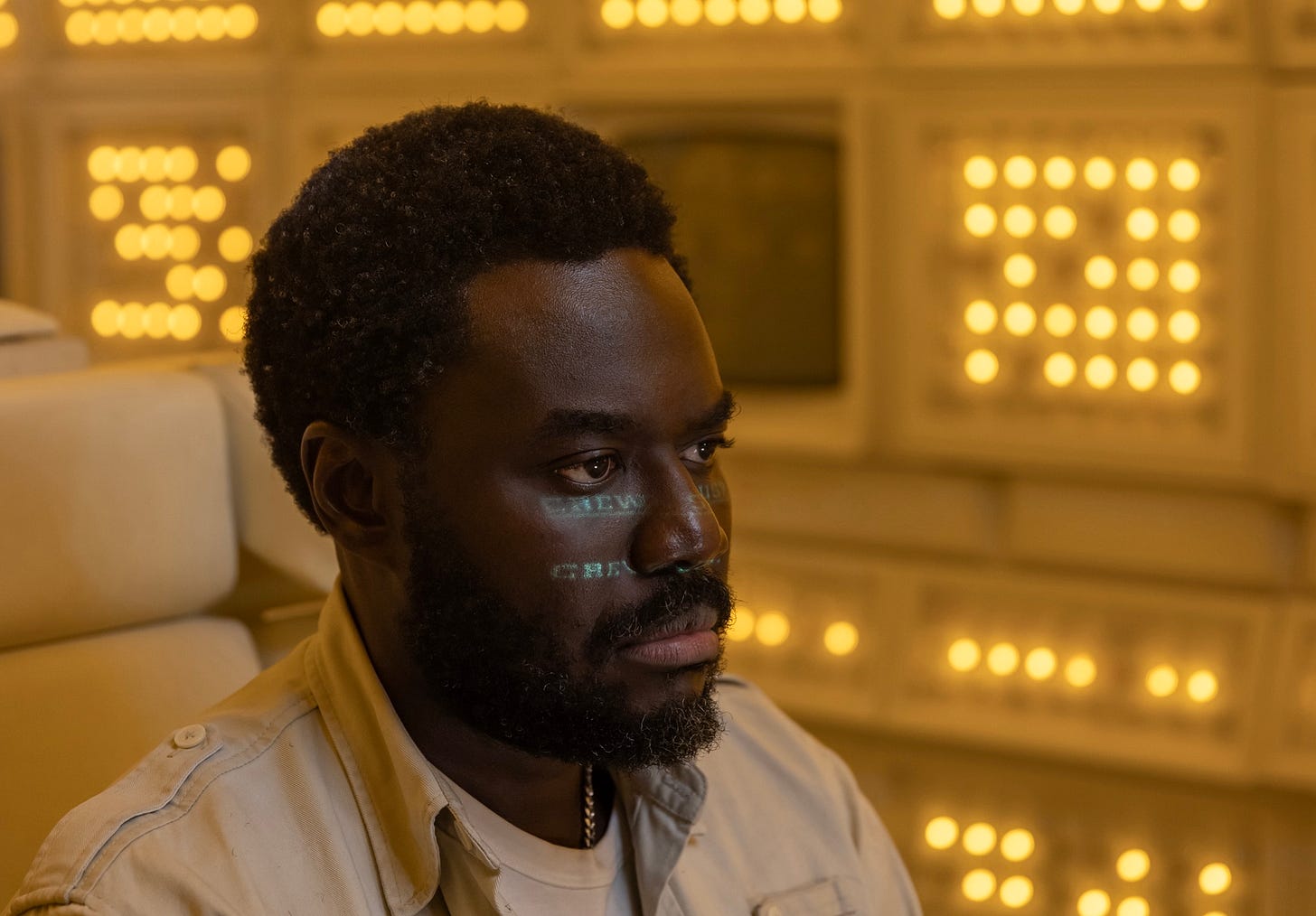
My biggest takeaway from these two episodes is how little there is to take away. I don’t mean this as a critique, necessarily, as the show’s pacing is something of an enigma. On the one hand, the show fastforwards through what could have been multiple episodes embedded within the Hybrid process, jumping quickly to Wendy’s creation and then using a fun one-shot montage to bring the others into the picture just as fast. At the same time, though, two episodes gets us nowhere near the end of the search-and-rescue mission, which could theoretically extend for multiple episodes. Will this setup create enough substance to keep the thematic stakes of the show growing in the midst of delivering action? Will the pace of the action stay at this current clip, or will we settle into more of a character-driven story in due time?
This uncertainty is part of what makes franchise extension TV shows like this interesting. With Hawley involved, I don’t necessarily approach the show from a purely cynical place, but it can’t not be part of that conversation. I didn’t get a chance to ask Hawley a question during the press conference, but I was interested in how he felt about the creative task ahead of him compared to his past adaptations. Sure, Legion was I.P., but any meaningful crossover with the X-Men films got destroyed after the Disney acquisition, leaving him largely to play in his own sandbox. This time around, there’s a feature film sequel coming soon, and Fede Álvarez signed on to direct Romulus a full two years after Hawley started work on Earth. While this show is not trying to make active connections to the existing continuity, at least so far, it’s certainly a building block in Disney’s larger plans for the franchise, and how it manages that while also creating meaningful TV in its own right is the question at hand.
So far, it’s delivering on the basics of what we’d expect, but we’re still too early to know how much mileage there is in this latest incarnation of prestige franchise television.
Stray observations
- If you missed Variety’s cover story on the show, which bizarrely hyper-focuses on Sydney Chandler—who, yes, is Kyle Chandler’s daughter—skipping the photo shoot to avoid producing web content, you also missed the suggestion from FX Entertainment’s Gina Balian that “everything doesn’t have to fit together the way you expect from Marvel” and “fans don’t expect that in this universe.” And while it’s true that abandoning elements of Prometheus isn’t necessarily a bad thing given the film’s mixed reception, I would argue that fans expect some form of continuity from any franchise? Curious how that evolves as the season goes on.
- Watching the franchise in order really reinforced how the filmmakers were constantly grappling with how well new technologies allowed them to show more of the Xenomorphs, while also acknowledging their practical origins. I would argue that Alien: Earth mostly passed this test, and I don’t really have any issues with how they brought this together production design-wise. The scale is evident.
- The show’s Thailand setting is a byproduct of logistics, as the country had the best combination of production incentives and available soundstages, but Hawley has emphasized that they don’t want to return there, so I’m curious—without knowing where the rest of the season goes—how they’d manage a shift in location. Given we have three other corporations to focus on, I can see shifting locations for a second season, but lots of open questions there.
- It’s hard not to perceive Boy Kavalier through the lens of our present billionaire class, but the show isn’t positioning him as a villain, per se. His conversation with Sylvia about his motivations is definitely a red flag—experimenting solely because he’s bored with humanity as it stands—but I wouldn’t flag him as outright evil yet.
- Of the various Lost Boys, Slightly stands out, mostly because the show pairs him with Wendy and quite charmingly uses his child-like inability to keep secrets to avoid a lengthy period of Hermit not knowing Wendy’s true identity.
- I called the Xenomorph hiding as part of the statue, but it was still the best beat for me in the episode.
- The Peter Pan synergy is pretty central, but I really want to know how Hawley landed on the Ice Age: Continental Drift fury/furry joke—which is also synergy, now—as their indelible childhood memory? (And no, I didn’t know which Ice Age it was from without Googling. I did not keep up with those sequels).
- If you too were wondering what stroke of vanity convinced Noah Hawley to play Wendy and Hermit’s father in the flashbacks, the answer is simpler than you’d think: he cast his son as young Hermit and figured it would make it easier to get the desired performance than hiring an actor.
- I’m mostly into the “superimposing images over close-ups of characters” stylistic choice, but that made things especially confusing when Hermit was watching the Mr. October video and the clip is actually playing?
- Curious how people felt about the needle drops, which are obviously distinct from how the films have historically handled soundtracking.
- Welcome to our coverage of Alien: Earth, almost five years after it was first announced. I’ll be curious how this one plays out, and am hoping to get a nice cross-section of fans and newcomers to prestige television’s latest foray into franchising.
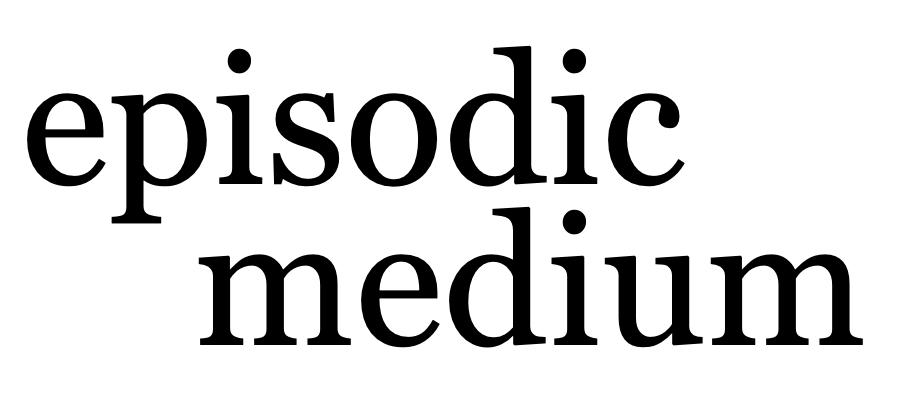
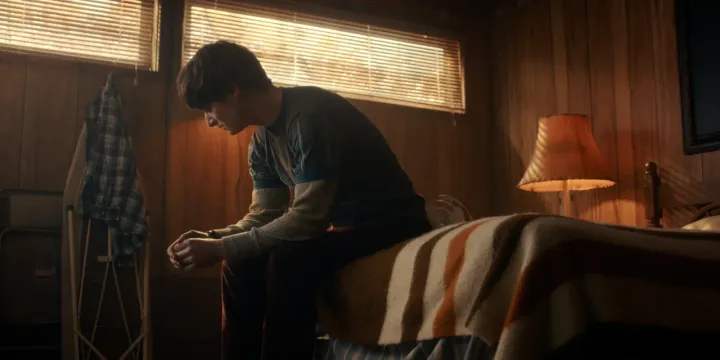
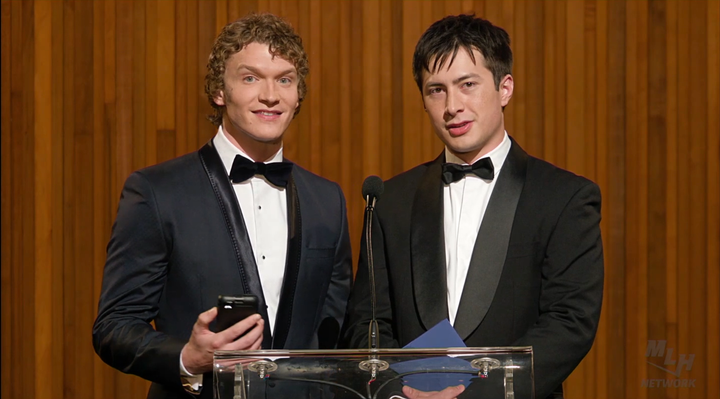

Comments ()